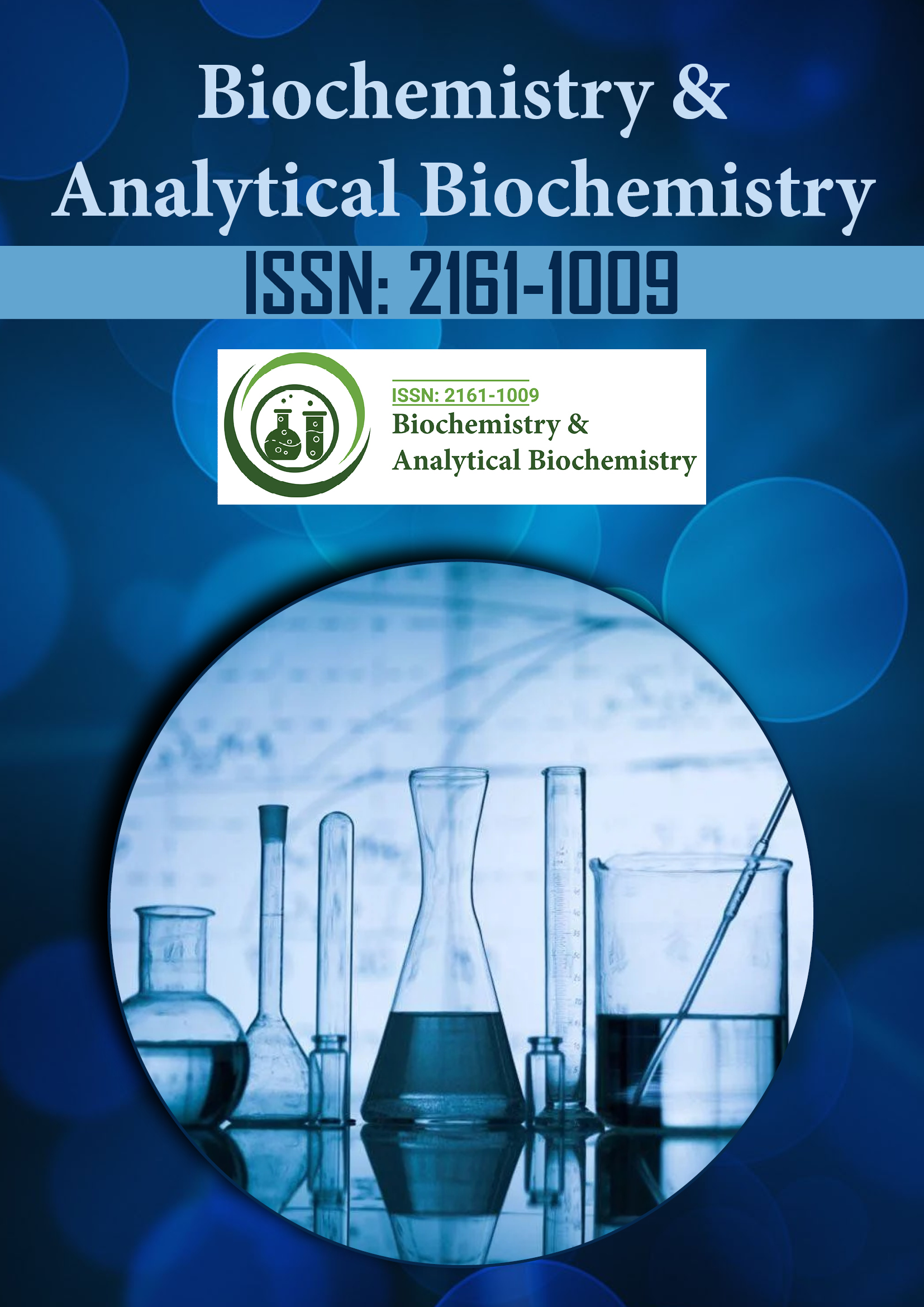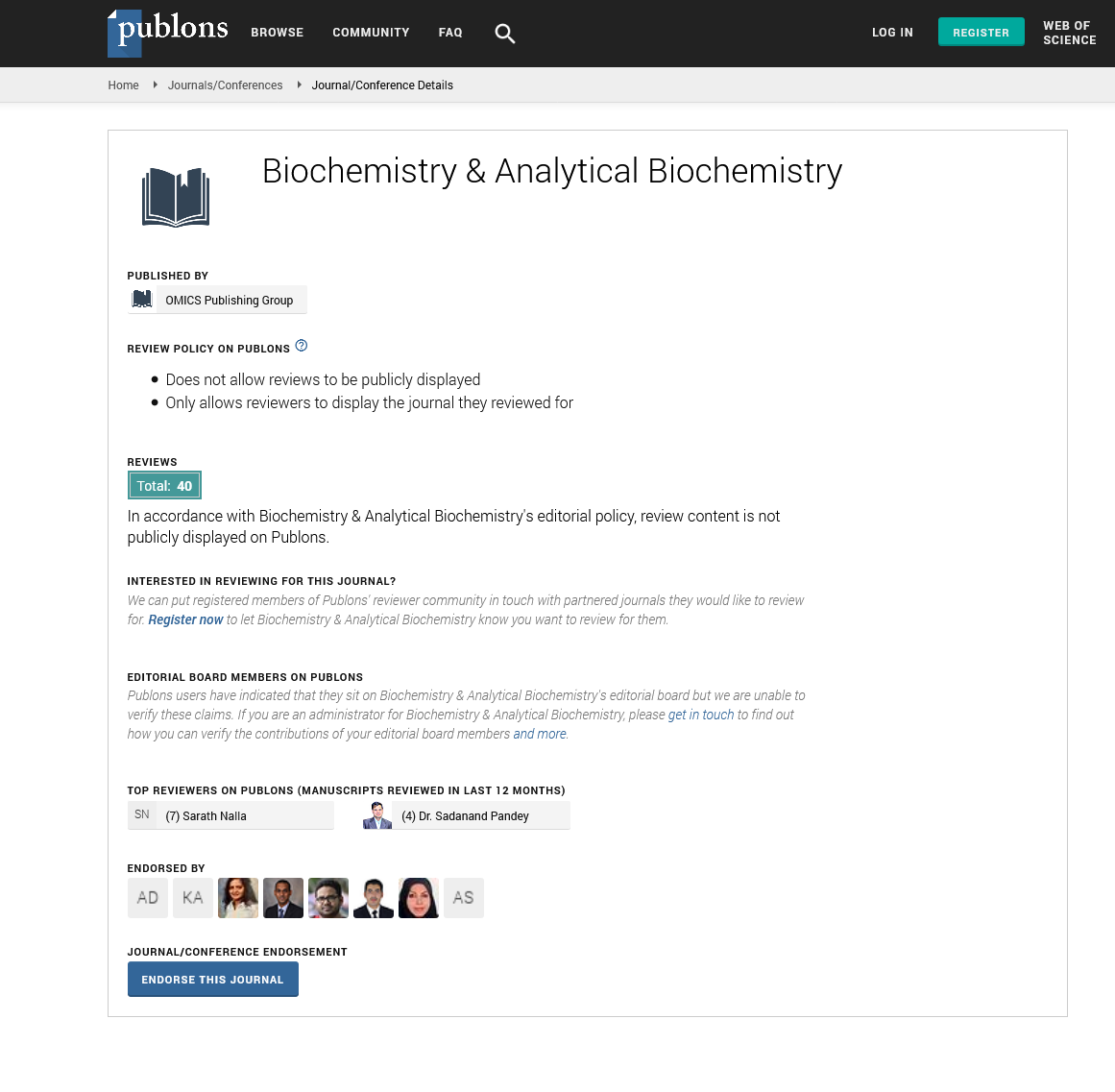Indexed In
- Open J Gate
- Genamics JournalSeek
- ResearchBible
- RefSeek
- Directory of Research Journal Indexing (DRJI)
- Hamdard University
- EBSCO A-Z
- OCLC- WorldCat
- Scholarsteer
- Publons
- MIAR
- Euro Pub
- Google Scholar
Useful Links
Share This Page
Journal Flyer

Open Access Journals
- Agri and Aquaculture
- Biochemistry
- Bioinformatics & Systems Biology
- Business & Management
- Chemistry
- Clinical Sciences
- Engineering
- Food & Nutrition
- General Science
- Genetics & Molecular Biology
- Immunology & Microbiology
- Medical Sciences
- Neuroscience & Psychology
- Nursing & Health Care
- Pharmaceutical Sciences
Opinion Article - (2022) Volume 11, Issue 1
Orientation of a Single Molecular Hierarchical Self-Assembled Sheet
Andrea Vettori*Received: 05-Jan-2022, Manuscript No. BABCR-22-415; Editor assigned: 07-Jan-2022, Pre QC No. BABCR-22-415; Reviewed: 20-Jan-2022, QC No. BABCR-22-415; Revised: 25-Jan-2022, Manuscript No. BABCR-22-415; Published: 31-Jan-2022, DOI: 10.35248/2161-1009.22.11.415
Description
Molecular Self-Assemblies (MSA) is a class of materials that spontaneously organize from individual molecular subunits into an ordered structure without templates or external guidance. MSAs can have larger architectures that maintain the high ordering and orientation of the smaller structures, known as hierarchical organization. In both natural and synthetic materials, even when formed from identical subunits, different hierarchical organization can lead to various material functions. For example, the diverse structures of natural collagen enable them to assume different tissue functions such as bone, skin etc.
In particular, bone possesses a twelve level hierarchical structure from collagen fibrils to the macroscopic fractal-like architectures, affording it both high stiffness and toughness, properties often considered mutually exclusive. Moreover, liquid crystal displays show different optical properties based on the orientation of the building blocks. Thus, it is feasible to design and manipulate materials functions through hierarchical organizations however, to do so, it is necessary to understand and control the relative positions and orientations of the subunits within the MSA.
Specifically, the orientation of building blocks within a MSA is important to its functions. Applications can be found in chemistry, such as alkanethiol self-assembled monolayers, which are used as an active layer in molecular electronics. The tilting of the alkanethiol chains with respect to surface normal can open additional tunneling pathways and change interfacial dipole properties, altering the electron transport properties. In biomaterials, mechanical properties often depend on the hierarchical subunit orientation. For example, the longitudinal modulus of nacre is higher than the transverse one because of oriented tiles in the hierarchical structures. It has also been demonstrated that surface wettability is correlated with the tilting of subunits, which could further affect protein adsorption and cell adhesion.
An interesting, recent development in MSAs is a lattice selfassembly composed of betacyclodextrin (β-CD) and sodium dodecyl sulfate in a 2:1 ratio, formed through intermolecular forces, especially hydrogen bonds. 11 This MSA assumes a variety of morphologies depending on the concentration of SDS and β-CD in water. We will refer to this MSA as SDS2βCD herein. The primary subunit of the SDS2β-CD self-assembly is the supra molecule comprised of two β-CD molecules penetrated by one SDS molecule. These subunits form highly ordered and oriented, rhombic nano-thickness sheets referred to as a nano sheet herein that can fold into larger microscopic architectures such as, lamella sheets, microtubules, rhombic dodecahedra, and micelles among others.
This MSA has drawn much attention because of the biomimetic nature of many of its microscopic architectures in addition to its broad application such as wastewater treatment, drug delivery, and optoelectronics. However, the structural details of the Nan sheets the most basic formation of the self-assembly that folds into all other higher order molecular architectures, are not fully understood. Through Small Angle X-ray Scattering (SAXS) the inter-supramolecules distance was determined to be 1.52 nm but, open questions remain regarding the relative orientation of the supramolecules in SDS2β-CD. Because molecular orientations often act as critical factors to MSA’s functions, it is pertinent to understand whether and how the supramolecules in the self-assembled sheets are, which could potentially indicate the van der Waals contact, the structural symmetry or the materials macroscopic properties.
Citation: Vettori A (2022) Orientation of a Single Molecular Hierarchical Self-Assembled Sheet. Biochem Anal Biochem. 11:415.
Copyright: © 2022 Vettori A. This is an open access article distributed under the terms of the Creative Commons Attribution License, which permits unrestricted use, distribution, and reproduction in any medium, provided the original author and source are credited.

